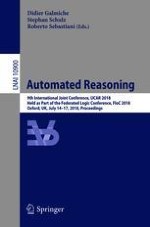2018 | OriginalPaper | Buchkapitel
A SAT-Based Approach to Learn Explainable Decision Sets
verfasst von : Alexey Ignatiev, Filipe Pereira, Nina Narodytska, Joao Marques-Silva
Erschienen in: Automated Reasoning
Aktivieren Sie unsere intelligente Suche, um passende Fachinhalte oder Patente zu finden.
Wählen Sie Textabschnitte aus um mit Künstlicher Intelligenz passenden Patente zu finden. powered by
Markieren Sie Textabschnitte, um KI-gestützt weitere passende Inhalte zu finden. powered by
